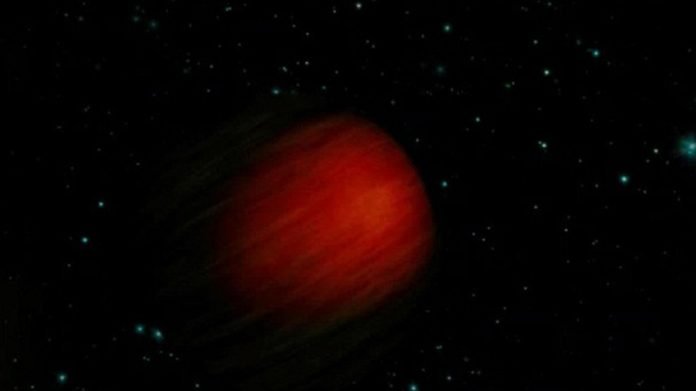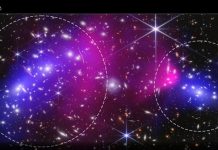
If we look at the gas giant planets in our solar neighborhood, we see a clear pattern:
The more massive the planet, the lower the percentage of “heavier” elements (anything other than hydrogen and helium) in the planet’s atmosphere.
But out in the galaxy, the atmospheric compositions of giant planets do not fit the solar system trend, an international team of astronomers has found.
Using NASA’s James Webb Space Telescope (JWST), the researchers discovered that the atmosphere of an exoplanet dubbed “Smertrios,” a hot planet orbiting a distant star similar to our sun, is super-abundant in the heavier elements carbon and oxygen—far above what scientists would expect for a planet of its mass.
“We have shown definitively that the atmospheric compositions of giant extrasolar planets do not follow the same trend that is so clear in the solar system planets,” said Jacob Bean, professor of astronomy and astrophysics at the University of Chicago and lead author of the paper.
“Giant extrasolar planets show a wide diversity in atmospheric compositions in addition to their wide diversity of overall compositions.”
These findings are an important first step toward obtaining similar measurements for a large sample of exoplanets to search for statistical trends, the researchers said. They also provide insight into planet formation.
“It appears that every giant planet is different, and we’re starting to see those differences thanks to JWST,” said Cornell University Prof. Jonathan Lunine, a co-author of the study.
Composition curiosities
In our solar system, the four giant planets follow a simple trend in composition with planet mass, Bean explained.
In contrast, planets orbiting distant stars show a much greater diversity of overall compositions— but scientists didn’t know how varied their atmospheric compositions are. That is, until this analysis of Smertrios (also known by its exoplanet call sign of HD149026b).
Smertrios, for one, is super-enriched compared to its mass, Lunine said: “It’s the mass of Saturn, but its atmosphere seems to have as much as 27 times the amount of heavy elements relative to its hydrogen and helium that we find in Saturn.”
This ratio, called “metallicity,” is useful for comparing a planet to its home star, or to other planets in its system, Lunine said. (So far, Smertrios is the only planet we’ve found in this particular system).
Another key measurement is the ratio of carbon to oxygen in a planet’s atmosphere, which reveals the “recipe” of original solids in a planetary system, Lunine said.
For Smertrios, it’s about 0.84. That’s higher than in our solar system, which is 0.55—a bit more than one carbon for every two oxygen atoms.
Together, these observations paint a picture in which Smertrios originally formed out of a swirling disk containing lots of carbon-rich solids.
While an abundance of carbon might seem favorable for the chances of life, a high carbon-to-oxygen ratio means less water on a planet or in a planetary system—a problem for life as we know it.
Bean and Lunine have observed four more giant exoplanets using JWST and are currently working to analyze the data.
Many more observations are needed before astronomers can discover any patterns among giant planets or in systems with multiple giant planets or terrestrial planets to the compositional diversity astronomers are beginning to document.
“The origin of this diversity is a fundamental mystery in our understanding of planet formation,” Bean said.
“We hope that further atmospheric observations of extrasolar planets with JWST will quantify this diversity better and yield constraints on more complex trends that might exist.”



